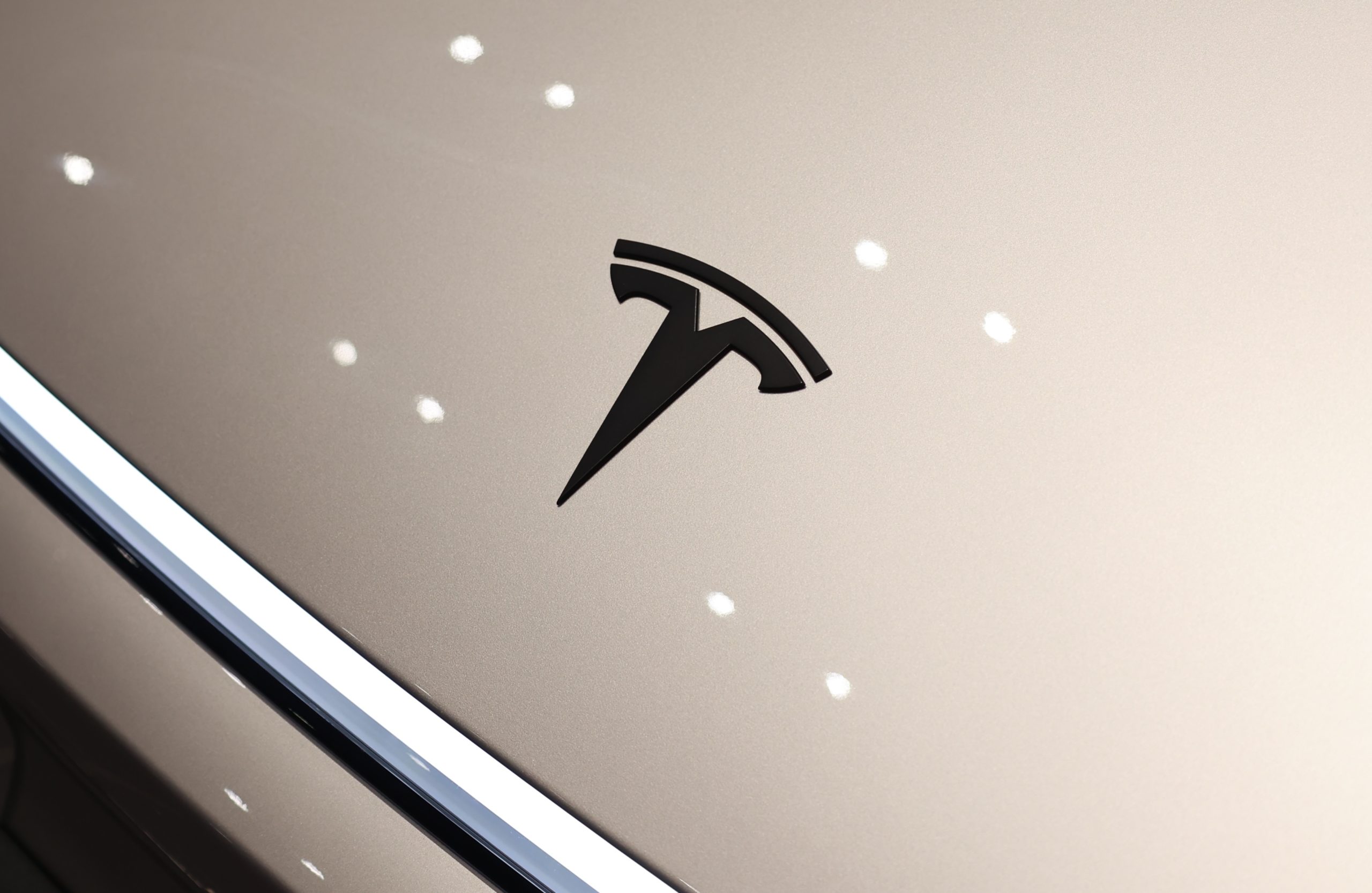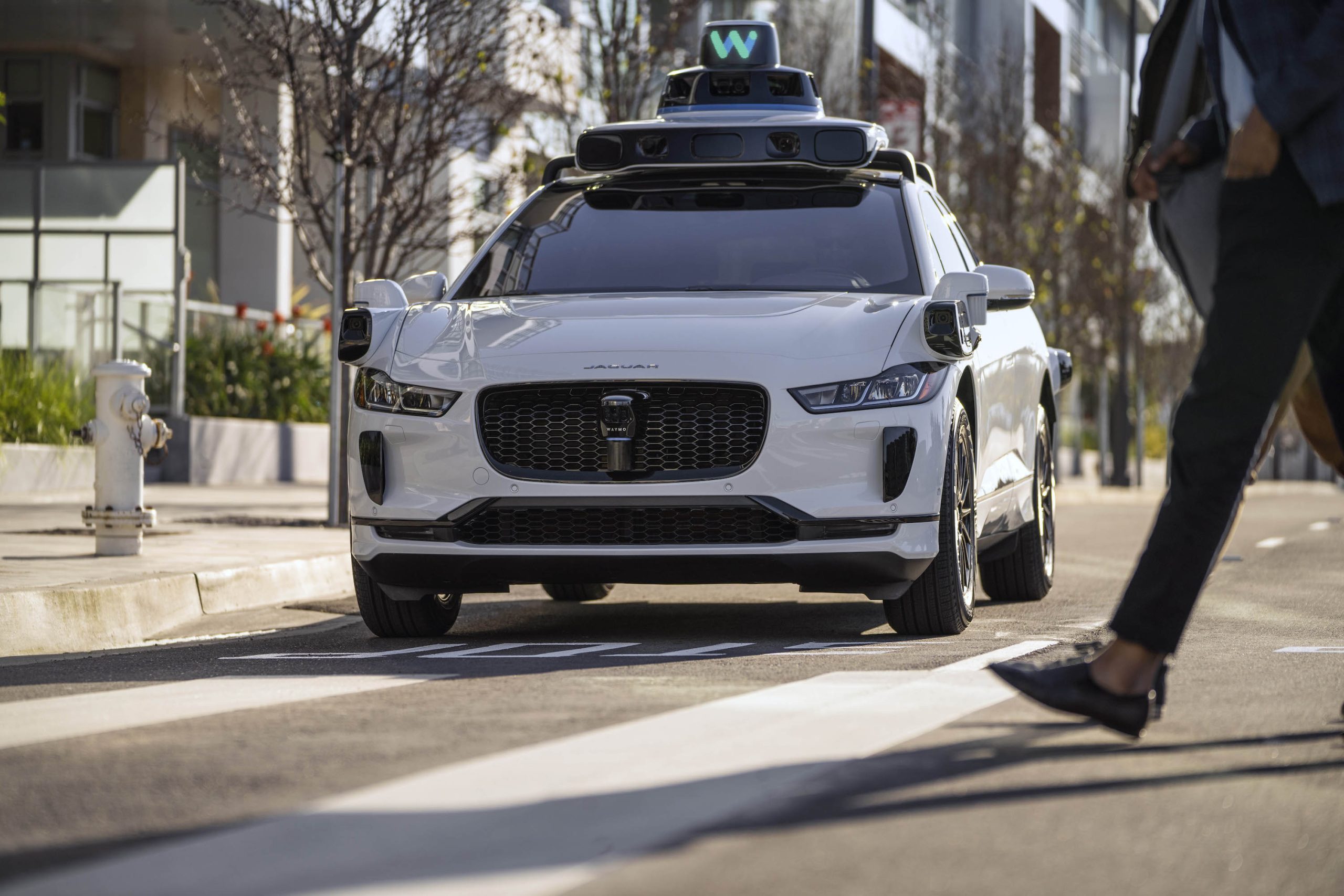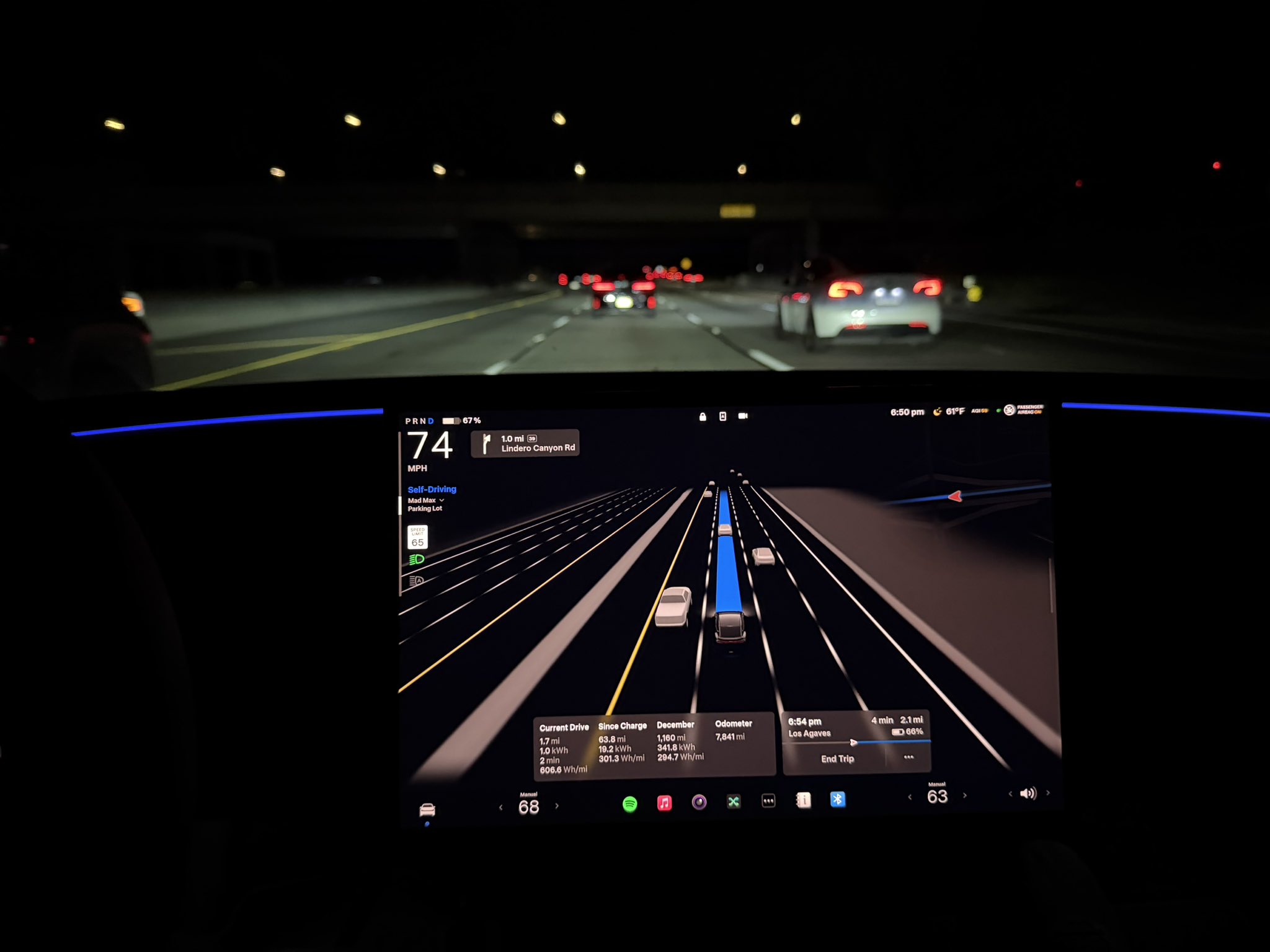News
Elon Musk says Autopilot can have ‘significant improvements’ via software update
![Tesla Autopilot Version 7.0 Dashboard Display [Source: Tesla Motors]](https://www.teslarati.com/wp-content/uploads/2015/10/Tesla-Version-7-Autopilot-Dash.jpg)
Tesla CEO Elon Musk says that current Autopilot can see ‘significant improvements’ via an over-the-air software update. The announcement was made on Sunday after Musk took to Twitter to reveal that he had earlier talks with Bosch, maker of the radar equipment used on the Model S and Model X. Aside from feeling hopeful that the existing Autopilot system can be improved without hardware upgrades, Musk also thanked driver-assistance technology company MobilEye “for their help and support in making Autopilot better.”
Btw, want to thank both Bosch and MobilEye for their help and support in making Autopilot better. Please direct all criticism at Tesla.
— Elon Musk (@elonmusk) July 17, 2016
When questioned about whether radar would be capable of detecting people – previous tests pitting a moving Tesla vs. a live human suggested that current versions of Autopilot were not great at detecting humans – Musk defended the company’s use of radar stating that radar can in fact detect humans at moderate range, however Tesla’s Autopilot suite also uses ultrasonic sensors which are “very good at human detection”.
It can at moderate range, but our ultrasonics are very good at human (or anything >= water density) detection
— Elon Musk (@elonmusk) July 17, 2016
Musk did not provide any details on when the next update of Autopilot would arrive, but did say that Tesla Version 8.0 would be the company’s largest software release since the first rollout of Autopilot 1.0.
V8 will be our biggest release since v1, so taking longer to refine. Awesome on every level. Meeting w design team every day.
— Elon Musk (@elonmusk) July 17, 2016
Musk also took the opportunity to defend his position on Autopilot after Consumer Reports criticized Tesla for releasing the auto-steering feature within the Autopilot suite. CR along with mass media have continued to put pressure on the Silicon Valley automaker and energy company to reconsider the use of beta software after Joshua Brown was killed when his Model S driving on Autopilot collided with a tractor trailer.
Musk posted a link to the a great write up by a Tesla owner on TMC who shared his thoughts on Autopilot. He also tweeted praise on an article in The Guardian entitled “The First Self-Driving Car Fatality Proves Nothing.”, by John Naughton. The author quite correctly points out, “In the US, about 33,000 people are killed in automobile accidents every year. That’s 90 a day on average. So on 7 May, about 89 other people as well as Joshua Brown were killed in car crashes. But we heard nothing about those 89 personal and family tragedies: the only death that most people in the US heard about was Mr Brown’s.”
Tesla customers are v smart & don't want media speaking on their behalf abt Autopilot. Recent poll: 0.0% want it disabled — not 0.1%, 0.0%.
— Elon Musk (@elonmusk) July 17, 2016
Media and even the US Senate want to get in on the Tesla bashing fun. The New York Times claims “the race by automakers and technology firms to develop self-driving cars has been fueled by the belief that computers can operate a vehicle more safely than human drivers. But that view is now in question after the revelation on Thursday that the driver of a Tesla Model S electric sedan was killed in an accident when the car was in self-driving mode.”
Really, asks Naughton? He refers to a recent report by the Rand Corporation that says, “[F]ully autonomous vehicles would have to be driven hundreds of millions of miles and sometimes hundreds of billions of miles to demonstrate their safety in terms of fatalities and injuries. Under even aggressive testing assumptions, existing fleets would take tens and sometimes hundreds of years to drive these miles — an impossible proposition if the aim is to demonstrate performance prior to releasing them for consumer use.
“Our findings demonstrate that developers of this technology and third-party testers cannot simply drive their way to safety. Instead, they will need to develop innovative methods of demonstrating safety and reliability. And yet, it may still not be possible to establish with certainty the safety of autonomous vehicles.
“Therefore, it is imperative that autonomous vehicle regulations are adaptive — designed from the outset to evolve with the technology so that society can better harness the benefits and manage the risks of these rapidly evolving and potentially transformative technologies.”
The hope here is that concerns about Autopilot do not turn into a media driven maelstrom. If Musk’s tweets are any indication, Tesla is laser-focused on bringing about its next generation Autopilot 2.0.

News
Tesla (TSLA) receives “Buy” rating and $551 PT from Canaccord Genuity
He also maintained a “Buy” rating for TSLA stock over the company’s improving long-term outlook, which is driven by autonomy and robotics.

Canaccord Genuity analyst George Gianarikas raised his Tesla (NASDAQ:TSLA) price target from $482 to $551. He also maintained a “Buy” rating for TSLA stock over the company’s improving long-term outlook, which is driven by autonomy and robotics.
The analyst’s updated note
Gianarikas lowered his 4Q25 delivery estimates but pointed to several positive factors in the Tesla story. He noted that EV adoption in emerging markets is gaining pace, and progress in FSD and the Robotaxi rollout in 2026 represent major upside drivers. Further progress in the Optimus program next year could also add more momentum for the electric vehicle maker.
“Overall, yes, 4Q25 delivery expectations are being revised lower. However, the reset in the US EV market is laying the groundwork for a more durable and attractive long-term demand environment.
“At the same time, EV penetration in emerging markets is accelerating, reinforcing Tesla’s potential multi‑year growth runway beyond the US. Global progress in FSD and the anticipated rollout of a larger robotaxi fleet in 2026 are increasingly important components of the Tesla equity story and could provide sentiment tailwinds,” the analyst wrote.
Tesla’s busy 2026
The upcoming year would be a busy one for Tesla, considering the company’s plans and targets. The autonomous two-seat Cybercab has been confirmed to start production sometime in Q2 2026, as per Elon Musk during the 2025 Annual Shareholder Meeting.
Apart from this, Tesla is also expected to unveil the next-generation Roadster on April 1, 2026. Tesla is also expected to start high-volume production of the Tesla Semi in Nevada next year.
Apart from vehicle launches, Tesla has expressed its intentions to significantly ramp the rollout of FSD to several regions worldwide, such as Europe. Plans are also underway to launch more Robotaxi networks in several more key areas across the United States.
News
Waymo sues Santa Monica over order to halt overnight charging sessions
In its complaint, Waymo argued that its self-driving cars’ operations do not constitute a public nuisance, and compliance with the city’s order would cause the company irreparable harm.

Waymo has filed a lawsuit against the City of Santa Monica in Los Angeles County Superior Court, seeking to block an order that requires the company to cease overnight charging at two facilities.
In its complaint, Waymo argued that its self-driving cars’ operations do not constitute a public nuisance, and compliance with the city’s order would cause the company irreparable harm.
Nuisance claims
As noted in a report from the Los Angeles Times, Waymo’s two charging sites at Euclid Street and Broadway have operated for about a year, supporting the company’s growing fleet with round-the-clock activity. Unfortunately, this has also resulted in residents in the area reportedly being unable to sleep due to incessant beeping from self-driving taxis that are moving in and out of the charging stations around the clock.
Frustrated residents have protested against the Waymos by blocking the vehicles’ paths, placing cones, and “stacking” cars to create backups. This has also resulted in multiple calls to the police.
Last month, the city issued an order to Waymo and its charging partner, Voltera, to cease overnight operations at the charging locations, stating that the self-driving vehicles’ activities at night were a public nuisance. A December 15 meeting yielded no agreement on mitigations like software rerouting. Waymo proposed changes, but the city reportedly insisted that nothing would satisfy the irate residents.
“We are disappointed that the City has chosen an adversarial path over a collaborative one. The City’s position has been to insist that no actions taken or proposed by Waymo would satisfy the complaining neighbors and therefore must be deemed insufficient,” a Waymo spokesperson stated.
Waymo pushes back
In its legal complaint, Waymo stated that its “activities at the Broadway Facilities do not constitute a public nuisance.” The company also noted that it “faces imminent and irreparable harm to its operations, employees, and customers” from the city’s order. The suit also stated that the city was fully aware that the Voltera charging sites would be operating around the clock to support Waymo’s self-driving taxis.
The company highlighted over one million trips in Santa Monica since launch, with more than 50,000 rides starting or ending there in November alone. Waymo also criticized the city for adopting a contentious strategy against businesses.
“The City of Santa Monica’s recent actions are inconsistent with its stated goal of attracting investment. At a time when the City faces a serious fiscal crisis, officials are choosing to obstruct properly permitted investment rather than fostering a ‘ready for business’ environment,” Waymo stated.
News
Tesla FSD v14.2.2 is getting rave reviews from drivers
So far, early testers have reported buttery-smooth drives with confident performance, even at night or on twisty roads.

Tesla Full Self-Driving (Supervised) v14.2.2 is receiving positive reviews from owners, with several drivers praising the build’s lack of hesitation during lane changes and its smoother decision-making, among others.
The update, which started rolling out on Monday, also adds features like dynamic arrival pin adjustment. So far, early testers have reported buttery-smooth drives with confident performance, even at night or on twisty roads.
Owners highlight major improvements
Longtime Tesla owner and FSD user @BLKMDL3 shared a detailed 10-hour impression of FSD v14.2.2, noting that the system exhibited “zero lane change hesitation” and “extremely refined” lane choices. He praised Mad Max mode’s performance, stellar parking in locations including ticket dispensers, and impressive canyon runs even in dark conditions.
Fellow FSD user Dan Burkland reported an hour of FSD v14.2.2’s nighttime driving with “zero hesitations” and “buttery smooth” confidence reminiscent of Robotaxi rides in areas such as Austin, Texas. Veteran FSD user Whole Mars Catalog also demonstrated voice navigation via Grok, while Tesla owner Devin Olsen completed a nearly two-hour drive with FSD v14.2.2 in heavy traffic and rain with strong performance.
Closer to unsupervised
FSD has been receiving rave reviews, even from Tesla’s competitors. Xpeng CEO He Xiaopeng, for one, offered fresh praise for FSD v14.2 after visiting Silicon Valley. Following extended test drives of Tesla vehicles running the latest FSD software, He stated that the system has made major strides, reinforcing his view that Tesla’s approach to autonomy is indeed the proper path towards autonomy.
According to He, Tesla’s FSD has evolved from a smooth Level 2 advanced driver assistance system into what he described as a “near-Level 4” experience in terms of capabilities. While acknowledging that areas of improvement are still present, the Xpeng CEO stated that FSD’s current iteration significantly surpasses last year’s capabilities. He also reiterated his belief that Tesla’s strategy of using the same autonomous software and hardware architecture across private vehicles and robotaxis is the right long-term approach, as it would allow users to bypass intermediate autonomy stages and move closer to Level 4 functionality.








